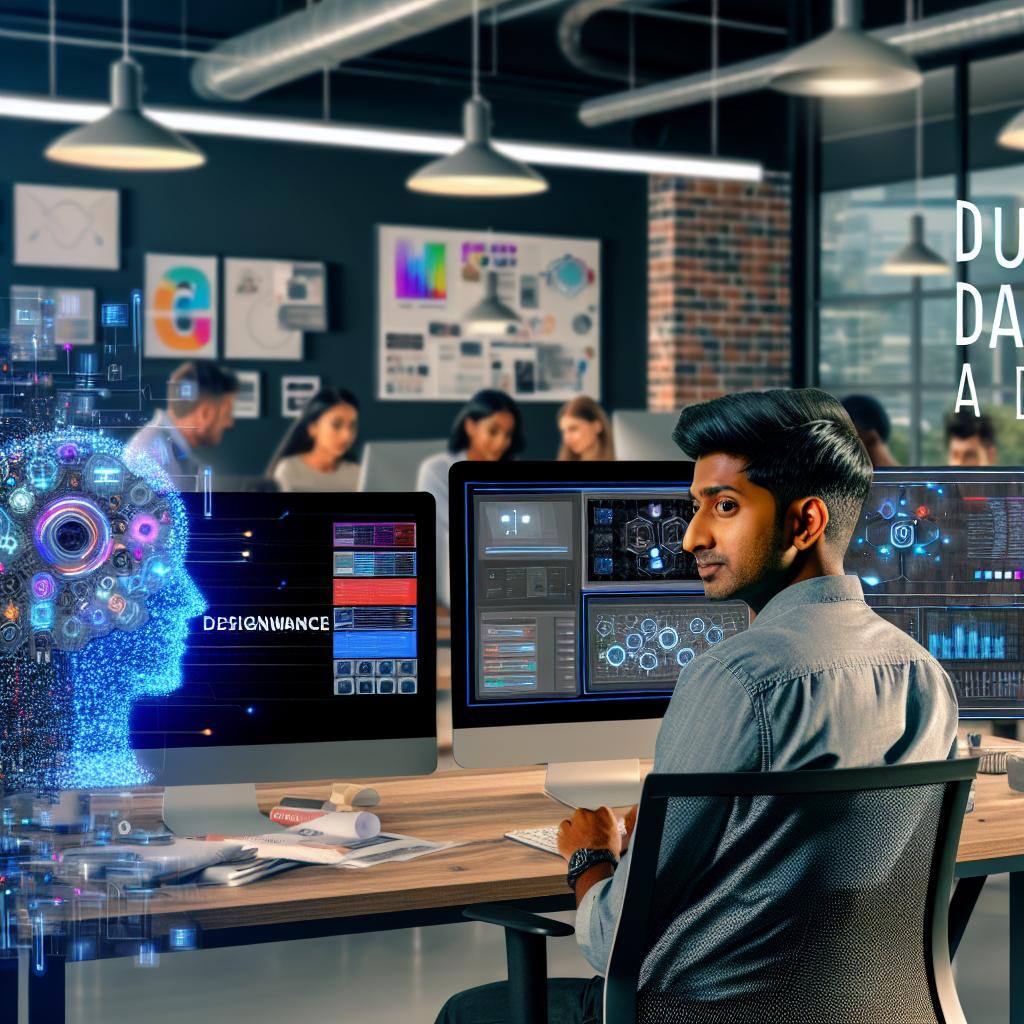Travel Marketing Tips for Navigating the Digital Waters
Digital media is hard enough to get right, but when faced with ever-changing market trends and a massively crowded field of rivals all fighting for...
4 min read
Michael Clark : Feb 18, 2025

Discover how generative AI is revolutionizing ad campaigns, enhancing engagement and driving unprecedented ROI.
Audience targeting in digital media has undergone a significant transformation with the adoption of advanced AI-driven algorithms by major digital media platforms such as Meta and Google. As AI in performance marketing continues to evolve, platforms like Meta leverage sophisticated AI to sift through vast amounts of user data, identifying patterns and preferences to deliver personalized content and advertisements. This AI-targeted approach has become a game-changer for media platforms, optimizing ad delivery and ensuring that users are presented with content and advertisements that align with their interests—ultimately driving higher engagement and conversion rates.
Wall Street has taken note of this shift to AI-driven media platforms, even if many advertisers have not.
In fact, Mark Zuckerberg has plainly stated that AI "creates value for advertisers." As recently as April, during Meta's Q1 earnings call, Zuckerberg said that artificial intelligence "is already helping us improve app engagement, which naturally leads to seeing more ads and improving ads directly to deliver more value." Further, "AI has also been a huge part of how we create value for advertisers by showing people more relative ads," Zuckerberg said. "And if you look at our two end-to-end AI-powered tools, Advantage+ Shopping and Advantage+ App Campaigns, revenue flowing through those has more than doubled since last year."
Given all of this, the obvious question for advertisers is: How do my ads and campaigns gain an advantage on AI-driven media platforms?
The only way to compete with AI is with your own AI. In other words, don't bring a knitting needle to a gunfight.

Generative AI stands at the forefront of a new era in advertising. It refers to the subset of artificial intelligence that can generate new content within predefined boundaries or rules. These AI tools are programmed to understand and replicate patterns, allowing them to produce a multitude of creative assets for digital ad campaigns. Generative AI enables advertisers to swiftly create diverse and numerous advertisements, which can then be optimized for performance across the totality of your digital media campaign.
Having a well-trained Generative AI capability is CRUCIAL to competing in the AI-driven algorithmic world of today's digital media platforms. The reason for this is that media platform algorithms, like the ones employed by Meta, need data signals to optimize and deliver improved campaign performance. The more data signals provided to the media algorithms, the faster that better performance outcomes are achieved. And the number one signal that an advertiser can feed into the media platform algorithms to help them learn is...creative. Lots and lots of creative.

Without some well-trained Generative AI capability, few advertisers are able to provide the volume and breadth of creative required to optimize most performance marketing campaigns.
While generative AI presents numerous opportunities for advertisers, there are also challenges and considerations to be mindful of when implementing these technologies. Issues such as ensuring brand consistency, maintaining the relevance of generated content, and addressing ethical concerns around the use of AI-generated imagery must be carefully navigated. Additionally, advertisers must stay up-to-date with the latest regulations and guidelines pertaining to AI-generated content and data privacy within their industry vertical.
Another important consideration is the potential for AI to generate unintended or inappropriate content. Advertisers and their agencies must have robust monitoring and quality control processes in place to prevent such occurrences and maintain the integrity of their campaigns. In many instances throughout this article, I have used the phrase "well-trained Generative AI." As an advertiser, you want to work with professionals and agencies that have deep experience in this area and who understand the intricacies of the technology.
The biggest challenge of all, however, is more likely human than technical. A mindset shift is required among advertising professionals. Generations of marketers have been trained to craft and identify the single best ad. To articulate the Unique Selling Proposition. To deliver a consistent message across all channels. This approach sub-optimizes, if not completely undermines, the performance of today's media platform algorithms. This historical approach also does not reflect the reality of a dynamic buying environment comprised of prospects in various stages of their buying journey who may possess vastly different motivations for making a purchase or considering a brand. No one ad or message delivered through traditional creative development processes can match these market realities. AI, however, increasingly can and is matching these dynamic market realities. You can deliver dozens of messages and test dozens of images and templates relatively efficiently...while more quickly moving to an acceptable ROAS. In fact, the best-performing marketing campaigns are now those with the most creative variety.

Think also of A/B split testing, which is intended to find the "best ad" out of two, then repeat. In an algorithmic media world, the media algorithm will find the place for both A and B versions...as well as C, D, and E, etc. This is an exciting development, but again requires a mindset shift for A vs. B to A and B, plus.
Beeby Clark+Meyler has observed the tangible benefits of creative volume in our clients' advertising campaigns. The bottom line is that an increase in creative volume correlates with improved ad engagement and higher conversion rates. These repeated observations serve as evidence that a strategic approach involving the deployment of generative AI can significantly outperform traditional methods that rely on smaller sets of creative assets.
The data set below is typical of the results that we see when we increase creative volume. This is for a Meta campaign for a B2B marketer in the SaaS space running an acquisition campaign 1H 2024. We have seen similar results in B2C for products from Travel, Hospitality, Financial Services, Education, and Consumer Goods.
 Another look at the same campaign with the inclusion of Conversions.
Another look at the same campaign with the inclusion of Conversions.

More creative assets running through digital campaigns on any major platform results in stronger results faster.
The role of AI in advertising is expected to continue evolving, with new trends and technologies shaping the industry and altering business models. BCM is currently experimenting with more sophisticated AI algorithms capable of predictive analytics and dynamically adjusting campaigns in real time based on user interaction data. Furthermore, the convergence of AI with emerging technologies such as augmented reality (AR) and virtual reality (VR) will open new avenues for immersive and interactive advertising experiences.
Also, given our work in regulated industries such as real estate, we pay very close attention to the increasing importance of ethical AI, with a focus on transparency and fairness in algorithms. As the technology advances, industry standards and best practices will likely develop to ensure that AI remains a valuable tool for advertisers while respecting consumer rights and preferences.
If you would like to discuss AI in Performance marketing further, please do not hesitate to reach out to Michael Clark or the Beeby Clark+Meyler team. We love talking about these exciting new capabilities and how they drive practical day-to-day business results.
You can learn more about BCM's AI-Performance Marketing capabilities here and here.
Thank you!

Digital media is hard enough to get right, but when faced with ever-changing market trends and a massively crowded field of rivals all fighting for...

Pinterest is an image-focused site used to create and share collections (called “boards”) of visual bookmarks (called “Pins”). Pinterest boards are...

In B2B marketing, lead generation remains a critical driver of business growth. Yet, somewhere along the way, the definition of a lead—specifically a